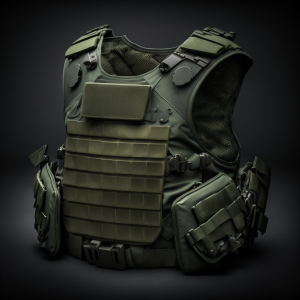Sidebar
Table of Contents
Body Armor
Body armor is a piece of equipment designed to protect the wearer from ballistic and other types of threats. It has been used by military and law enforcement agencies around the world for many years.
Price: Varies by brand and model, starting at Nothing found.
History
The history of body armor dates back to the 16th century when Japanese samurai used lamellar armor made of small metal plates laced together with cord. Over the centuries, different types of body armor were developed, including mail, plate, and modern ballistic armor.
Modern body armor emerged in the early 20th century with the introduction of soft armor made of layers of woven fabrics, such as Kevlar. In the 1970s, the US military developed the first effective ballistic armor plates, which were made of ceramic materials.
Today, body armor has advanced significantly with the incorporation of new materials and technologies. Some armor is now capable of stopping rifle rounds, while still being lightweight and comfortable to wear.
Description
Body armor comes in a variety of styles, materials, and protection levels. Some common materials used in the construction of body armor include Kevlar, Spectra, ceramic plates, and metal plates.
The most common style of body armor is a vest, which is worn over clothing and covers the chest, back, and sometimes the sides. The vest is typically made of multiple layers of materials designed to stop bullets and other projectiles.
Body armor is rated according to its ability to stop different types of projectiles. The National Institute of Justice (NIJ) has developed a rating system that classifies armor into different levels based on the caliber and velocity of the bullet it can stop.
Usage
Body armor is primarily used by military and law enforcement personnel in high-risk situations, such as combat or SWAT operations. It is designed to provide protection from bullets, shrapnel, and other threats.
It is important to note that body armor is not foolproof and can still fail in certain situations. It is also not a substitute for proper training and tactics.
When not in use, body armor should be properly stored in a cool, dry location to prevent damage and degradation of its protective properties.
OOC Notes
Wes created this article on 2023/02/26 07:30.
Page Tools
Terms of Service - Privacy Policy

